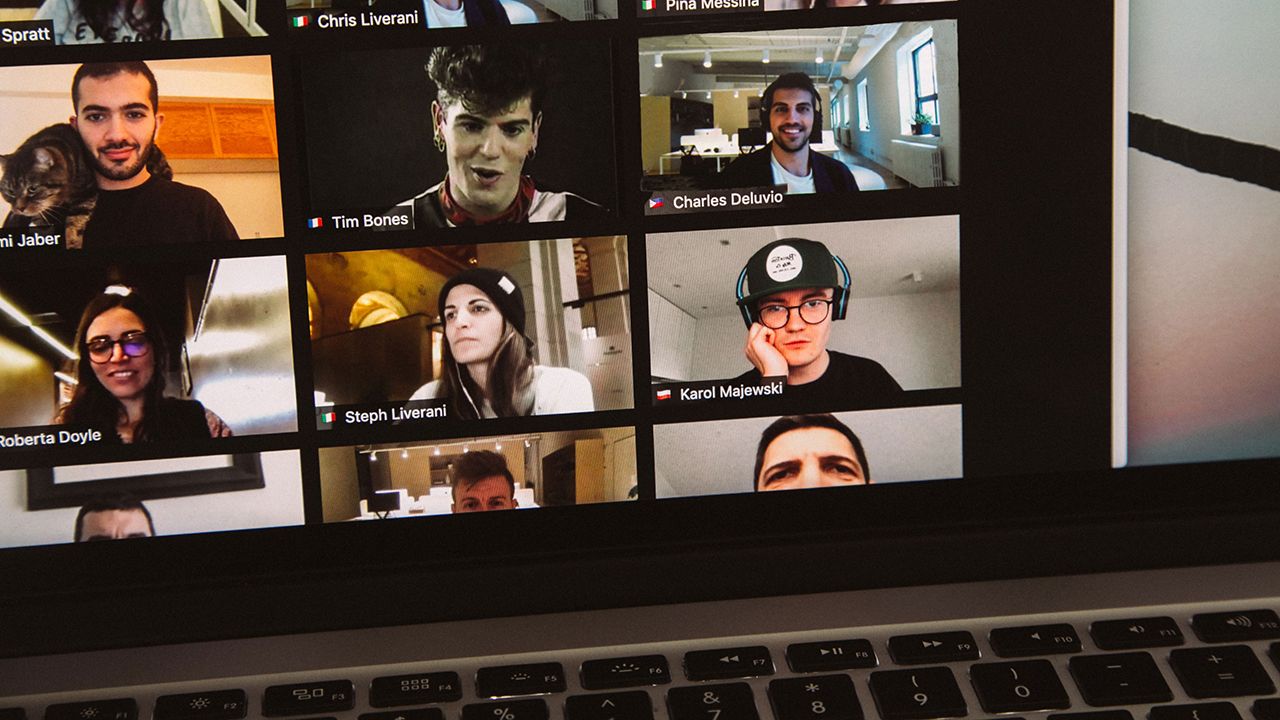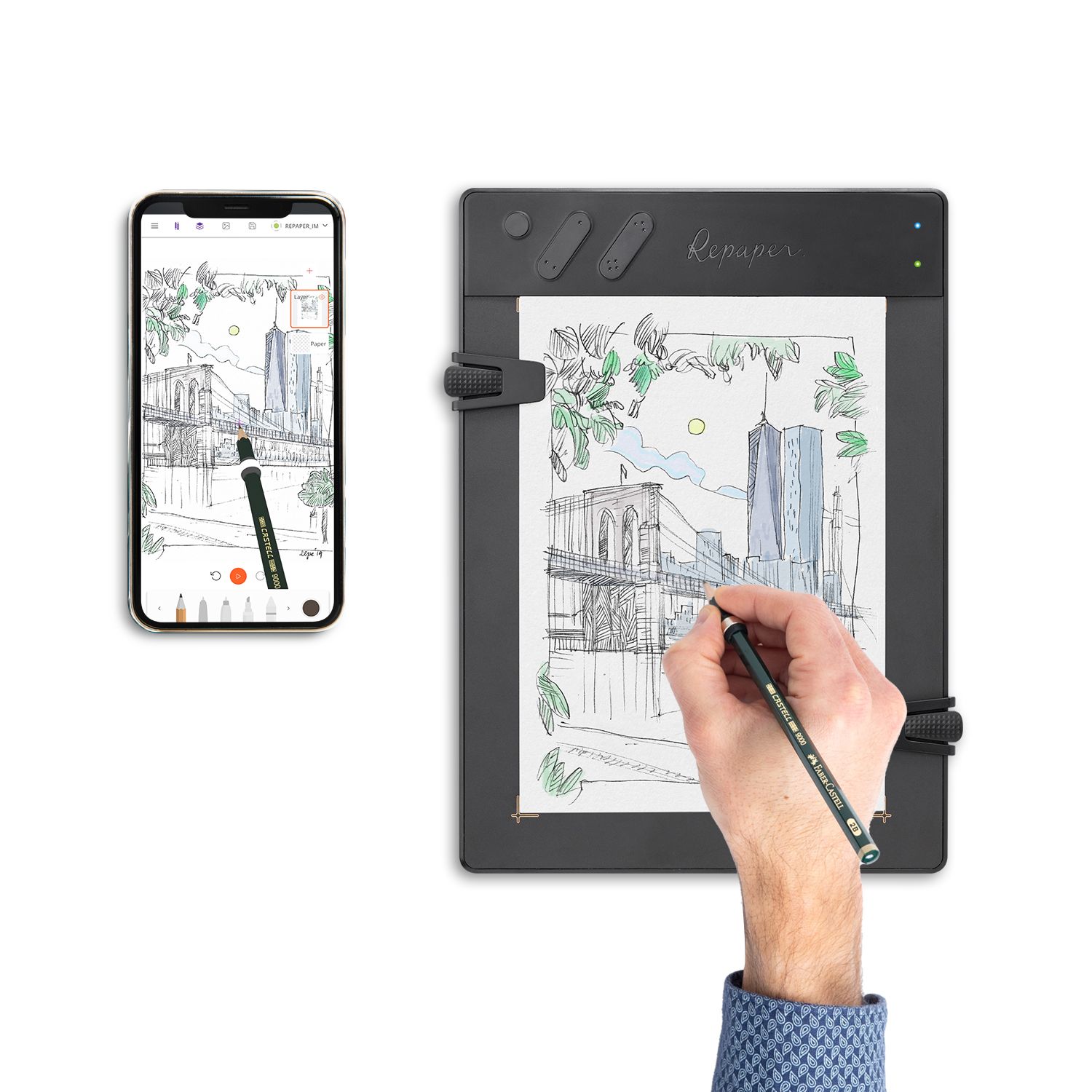
How to lead a remote meeting?
Organizing remote meetings is slowly becoming a standard for companies. Perfecting your facilitation techniques, so that all participants are involved in a remote meeting, can be a challenge for the facilitators. In order to establish a good group dynamic, using technology tools such as the graphics tablet can help you prepare and facilitate your meeting, thus conduct a productive meeting. In order to perfect your facilitation methods, structure your meetings and achieve your objectives, follow the tips and tools we provide here after so that you can prepare and organize your next remote meeting.
The drawing tablet, an essential ally for conducting remote meetings.
One of the most popular tools for running an effective meeting is the graphics tablet. With a tablet like the ISKN Repaper, you'll be able to share your graphics application screen with most video conferencing tools. Whether it's Zoom, Teams, or Meets, the Repaper tablet will easily adapt to each application, allowing you to create live sketches, drawings, and annotations to illustrate your ideas instantly. Whiteboard applications integrated with video conferencing software are also a solution. These are ideal for brainstorming or to pass on ideas as you would on a flip chart. Whether on Zoom Whiteboard or Google Jamboard, among others, explain your ideas with diagrams and drawings and, as the meeting leader, give your project presentations another dimension. Drawing diagrams will allow you to illustrate your arguments live, and thus convince your audience to adhere to your ideas, which remains the main objective of everyone in an effective team meeting. This becomes even more interesting if your employees also have a pen tablet. They can then be invited by the manager to participate and add their personal touch to the whiteboard instantly.


Drawing tablets such as the ISKN Repaper are recommended in this situation, especially if the participants in the meeting are not completely at ease with the use of this type of tool. Indeed, putting a sheet of paper on the tablet to make drawings and notes, as one would do on a standard notebook, allows even the most inexperienced to quickly familiarize themselves with this type of tool, while transcribing them live on the graphics software.
Indeed, there is no longer any need for a long learning curve to manage hand-eye coordination, as is required on more traditional screenless tablets that offer no reference points on the black plastic surface. With a graphic tablet, both the facilitator and the participants will be able to express their ideas quickly, clearly and concisely, as everyone knows how to write on paper. The technology of this type of tablet makes it possible to instantly transpose what you write and draw onto the computer screen. So, sketch out your findings and invite your co-workers to actively participate in the meeting to get their full attention. If you have already prepared the meeting in formats such as Powerpoint, Impress or Keynote, this is no problem. You can also use your drawing tablet to instantly annotate your slides, live for your audience. This gives you the opportunity to emphasize the points that are important to you, and turn a usually austere Powerpoint presentation into a dynamic demonstration.
The remote meeting: the new standard in business.
With the standardization of telecommuting, conducting meetings remotely is becoming more and more common for managers who want to check in with their teams. The current situation has changed the way we think about work, and it may be worthwhile to look at new tools to conduct your meetings effectively. For an effective meeting, the challenge for the moderator is to engage the participants and keep the audience focused on the agenda. Remote working meetings, as with all types of meetings, have a clear objective: to explain the purpose of the meeting to the participants, to inform them, to gather opinions, but above all to co-construct the projects with your colleagues. Many solutions exist to achieve this, and thanks to specific software and peripherals, such as the drawing tablet, it will be easier for the manager to present the challenges, and to motivate decision making by clearly presenting his or her ideas.

Some tips for a successful remote meeting.
Choose the right video conferencing software.
The software on which you organize your meeting will be essential for its smooth running. The interface becomes your meeting room, and that is why you should choose a video conferencing tool that is pleasant, accessible to all, and offers options for organizing and conducting a meeting in the best conditions. Among the most popular software, we can mention Zoom, Meets, Skype or Teams. All of these interfaces are offered by very famous companies, such as Microsoft or Google, and each has its own characteristics. Their options can indeed suit many situations. It's up to you to try and choose the application that you feel is best suited to your presentation and the computer skills of the participants.
Check your equipment.
Using the right tools for your meeting, and controlling them, is a step you should not neglect if you want to avoid wasting time. It may seem trivial, but having a webcam allowing your audience to see you will make the meeting more dynamic than with an empty and static avatar. That said, the most important point, often neglected in favor of video, is to check the sound of your microphone. If the ones provided in laptops are nowadays of good quality, it is still preferable to check it to avoid repeating the same sentences over and over again, because of a bad understanding of the participants. In the same way, checking the quality of your speakers and headphones is essential to clearly understand what the speakers are saying. As an organizer, it is preferable to prepare the participants by asking them to check their equipment beforehand so that everyone is able to hear the essential information and to be well heard while speaking. The same is obviously true if you are using external peripherals such as a drawing tablet. Checking that they are working properly will ensure that the meeting runs smoothly and is enjoyable for everyone.

Bring together the key players.
Managing and facilitating a meeting effectively also involves selecting the right participants. There is no point in gathering more people than you need, especially if they have nothing to contribute to the meeting. If the number of participants exceeds a dozen people, you are likely to lose productivity. Don't forget that often, a report of the meeting can be sufficient for the vast majority of your co-workers.
Once you have gathered the different stakeholders, it is important, at the beginning of the meeting, to go around the table to formalize the identity of each person. By giving them time to speak, each one can introduce himself or herself, and all those present can see what roles each person plays in the company. You can also, before or during the meeting, establish an organization chart of the different participants thanks to a drawing pad and a whiteboard interface. Doing it live allows everyone to clearly identify the people involved.
Remember to time your meeting.
To be productive, it is important to limit the time allocated to each topic to avoid endless meetings. To do so, do not hesitate to structure your meeting in several parts, to which you will define in advance a certain length, and to summarize certain key points to save time. Not getting lost in unnecessary details will make your interventions more productive and the participants will stay more alert during the whole time of the meetings you lead.

Don't forget the minutes.
At the end of the meeting, always remember to write a summary of each significant topic discussed during the meeting. These summaries are important inputs for each participant, and they help clarify key points raised during business meetings. You may also want to consider inviting someone to take notes specifically, which will allow you, as the facilitator, to focus on speaking. In order to facilitate the writing of your reports, do not hesitate to use the options of your graphic applications. These applications, like Repaper Studio, allow you to record what you have written, drawn and shared live during the meeting. Participants can then review the content of the meeting on video, and revisit the flow of what was said for a better understanding.
Adopt remote meetings.
We have seen how to organize and conduct a professional meeting remotely. Time management, creation of the list of participants, and sharing interactive minutes ... These tricks can make it easier to prepare and conduct a meeting, but the main thing that makes it more attractive and interesting for participants is proper material management. From audio to video, through software and drawing tablet, many possibilities are available to you to lead a collective project from a distance, and this, in an interesting and involving way, for all the people participating. Conducting meetings becomes easy, and whatever the topic, you can structure and conduct your presentations in a fun and captivating way.


Discover more
Develop creative ideas in meetings.
Organizing creative business meetings is a challenge, whether for managers who want to find new solutions to their problems or for creative professionals who need to deliver a visual message.
Tools and tips for successful telecommuting.
With the successive lockdowns, the development of telecommuting has become widespread in companies.
Key elements for remote teaching.
With the current situation having changed the way classes are taught and with the explosion of distance learning, teachers must now adapt their pedagogical tools
Newsletter
Keep up to date with iskn news and events
Free standard delivery
for purchase over €80
30-day returns
on all products
Secure payment
with Stripe & PayPal
Pay in 3
with Alma
Customer service
chat with us


